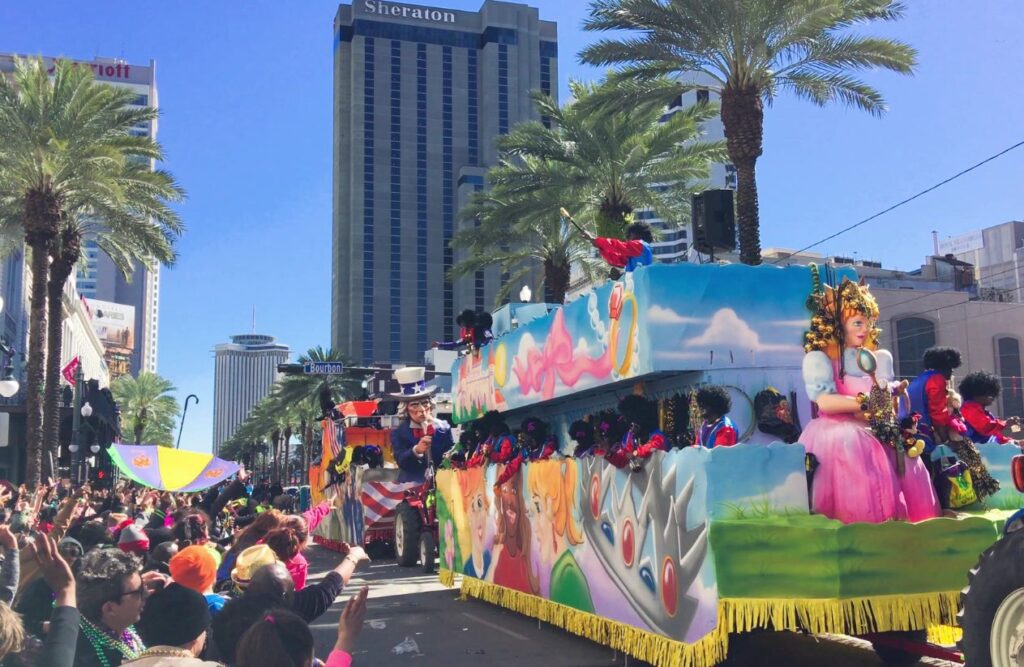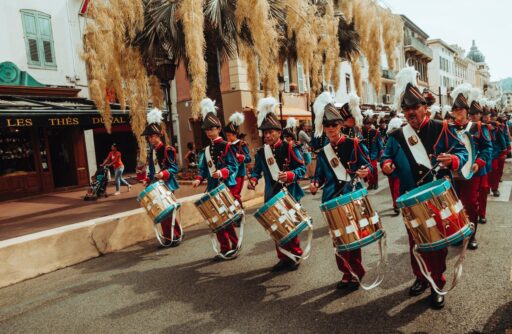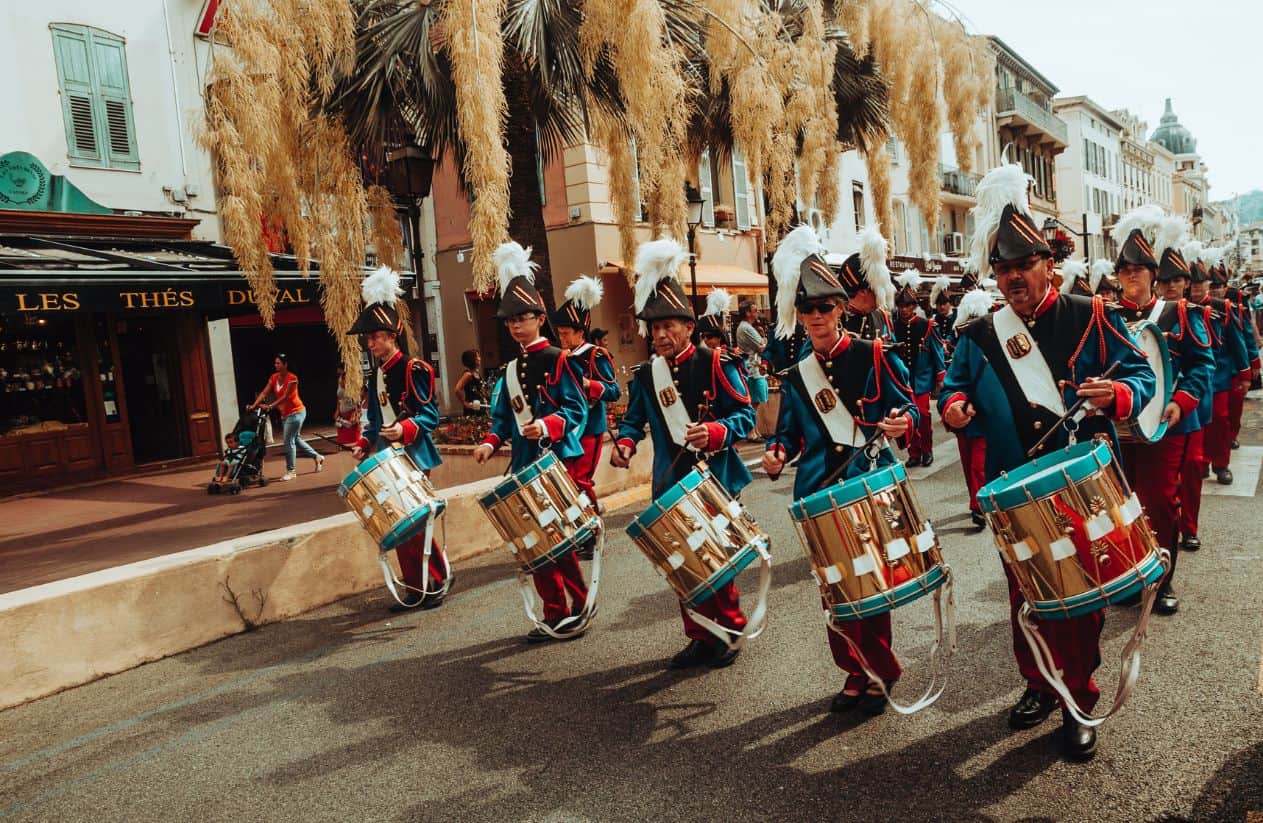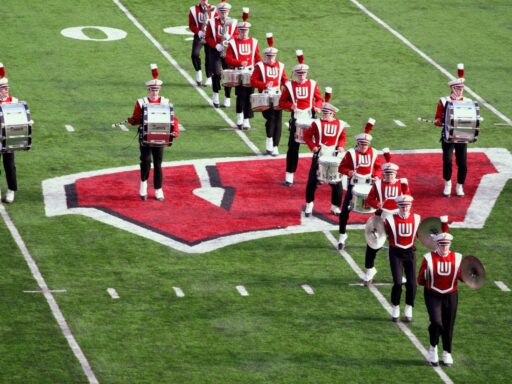Picture this: the sun’s shining, the music’s playing, and a wave of vibrant floats fills the street. You’ve got this incredible vision for a parade, something that’ll bring everyone together.
Then, reality hits. Where do you even begin? That mix of excitement and “oh no, what have I gotten myself into?” is something I know all too well.
I remember my first time helping organize a small community parade; the sheer number of details felt like juggling flaming torches! But here’s the thing: Planning Your Next Parade doesn’t have to be a daunting task.
It should be a journey filled with creativity and community spirit. This guide is here to demystify the process,turning that overwhelming feeling into a clear, manageable plan.
We’ll walk through each step together, transforming your dream into a street-stopping event that everyone will remember.
Key Takeaways: Your Parade Planning Blueprint
- Purpose-Driven Parades: Start with a clear vision and theme to guide every decision, ensuring your parade resonates with your community.
- Logistics Mastery: Tackle logistics early, including date selection, route planning, and permit acquisition, to avoid last-minute stress.
- Budgeting Brilliance: Create a realistic budget and explore diverse funding strategies, from sponsorships to community events, to make your parade financially feasible.
- Marketing Magic: Generate excitement with engaging social media campaigns, local media outreach, and eye-catching visuals.
- Volunteer Vitality: Build a strong volunteer team, providing clear roles and appreciation, for seamless execution on parade day.
- Safety First: Prioritize safety with medical support, crowd control, and contingency plans to ensure a secure and enjoyable event.
- Celebrate Success: Take time to appreciate your achievement and the positive impact your parade has on the community.
What’s the Heartbeat? Defining Your Parade’s Purpose and Theme

Before you start sketching float designs or booking bands,let’s talk about the soul of your parade. Why are you doing this? Is it to celebrate a local milestone, honor a historical event, or simply bring joy to your community?
Defining your purpose is the compass that will guide every decision you make in your parade planning process. A clear purpose transforms a simple procession into a meaningful experience.
Now, let’s spark some creativity with themes. Think beyond the usual holidays. How about a “Celebrating Local Heroes” parade, a “Fantasy Worlds” parade, or even a “Sustainable Future” parade showcasing eco-friendly floats? The key is to choose a theme that resonates with your community and excites your participants. A strong theme isn’t just a decorative element; it’s the thread that weaves your community together, creating a shared experience.
Here’s a quick exercise: grab a piece of paper and write down three words that capture the feeling you want your parade to evoke.
Then, brainstorm themes that align with those words. This simple step will help you crystallize your vision and ensure your parade is more than just a spectacle—it’s a celebration of community spirit.
The Nitty-Gritty: Mastering Parade Logistics (Without the Stress)

Alright, let’s get real about the logistics – the stuff that turns a dream into a real, live event.
First things first: the date. Don’t just pick a day that works for you. Think about your community.
Is there a big local festival happening that weekend? What’s the weather typically like?
Here’s a pro-tip: create a poll on social media or ask around at community meetings.
Getting input from the people who’ll be watching your parade is a great way to ensure a good turnout.
Now, let’s talk routes. Picture your parade winding through the streets. Are we talking a short and sweet neighborhood stroll or a grand, city-wide spectacle?
Here’s a checklist to consider:
- Crowd Capacity: Can the streets handle the number of people you’re expecting?
- Accessibility: Are there ramps and smooth surfaces for wheelchairs and strollers?
- Safety: Are there any potential hazards along the route, like busy intersections or narrow sidewalks?
- Scenic Appeal: Does the route showcase your community’s best features?
And then there are permits. Don’t let this part intimidate you. Reach out to your local authorities early. They’re there to help, not hinder. Ask for a checklist of everything you need, and start gathering the paperwork right away. Here’s what you’ll likely need:
- Road closure permits
- Noise ordinance waivers
- Insurance coverage
- Permits for any vendors or performers
Here’s an insider tip: create a master checklist. Break down every task into smaller, manageable steps, and assign deadlines. Use a project management tool like Trello or Asana to keep everything organized.
And always, always have a backup plan for unexpected issues. What if it rains? What if a key performer cancels at the last minute? Thinking ahead will save you a lot of stress on parade day.
Show Me the Money: Budgeting and Funding That Works

Let’s face it, parades cost money. But with some smart planning, you can make your vision a reality without breaking the bank. First, let’s create a realistic budget. Start by listing every expense, no matter how small.
Think:
- Permits and insurance
- Road closures and traffic control
- Entertainment (bands, performers, DJs)
- Decorations and float materials
- Sound system and technical equipment
- Security and medical personnel
- Marketing and advertising
- Volunteer supplies (food, water, etc.)
Once you have a comprehensive list, research the costs and assign a dollar amount to each item. Don’t forget to add a contingency fund for unexpected expenses – aim for 10-15% of your total budget.
Now, let’s talk about funding. Get creative! Here are some ideas:
- Sponsorships: Reach out to local businesses. Offer them visibility in exchange for financial support. Create sponsorship packages with different levels of benefits.
- Crowdfunding: Use platforms like Kickstarter or GoFundMe to raise money from your community. Share your parade’s story and vision to attract donors.
- Community Events: Organize fundraising events like bake sales, car washes, or raffles.
- Grants: Research grants offered by local organizations or government agencies.
Remember, resourcefulness is key. Look for ways to save money without sacrificing quality. Can you borrow decorations or equipment? Can you recruit volunteers to help with tasks?
Finally, keep track of your finances. Use a spreadsheet or budgeting app to monitor your income and expenses. This will help you stay on track and avoid any surprises. And keep all receipts, this will help with end of year reporting.
Make Some Noise: Marketing Your Parade for Maximum Impact

Alright, folks, let’s get down to brass tacks. You’ve got a parade to fill, and that means getting strategic with your marketing. Here’s a breakdown of how to really make some noise:
1. Social Media: Beyond the Basic Post
- Content Calendar: Don’t just post randomly. Create a content calendar. Plan posts that build anticipation: “Meet the performers,” “Float sneak peeks,” “Countdown to parade day.”
- Interactive Content: Run polls, Q&As, and contests. Ask your audience what music they want to hear or what kind of floats they’d love to see.
- Live Video: Go live during float building or rehearsals. Give your audience a behind-the-scenes look and build excitement.
- Targeted Ads: Use Facebook or Instagram ads to reach specific demographics in your area. Target people interested in community events, festivals, or family activities.
- Influencer Outreach: Partner with local influencers or bloggers to promote your parade. Offer them exclusive access or content in exchange for promotion.
2. Local Media: Building Relationships
- Personalized Pitches: Don’t send generic press releases. Tailor your pitch to each media outlet. Highlight what makes your parade unique and newsworthy.
- Visual Assets: Provide high-resolution photos and videos to media outlets. Make their job easier.
- Media Kits: Create a media kit with key information about your parade, including a press release, photos, and contact information.
- Local Partnerships: Partner with local radio stations or TV channels to host contests or giveaways.
- Community Calendars: Submit your parade information to local community calendars and event listings.
3. Eye-Catching Visuals: Design with Purpose
- Branding Consistency: Use consistent colors, fonts, and imagery across all your marketing materials. Create a logo or tagline for your parade.
- Call to Action: Include a clear call to action on all your marketing materials. Tell people what you want them to do (e.g., “Visit our website,” “RSVP on Facebook,” “Share this post”).
- Mobile Optimization: Ensure your digital graphics are optimized for mobile devices. Most people will view them on their phones.
- Accessibility: Use high-contrast colors and clear fonts to make your visuals accessible to everyone.
- QR Codes: Use QR codes to link to your parade’s website, social media pages, or online registration form.
4. Community Engagement: Making it a Team Effort
- Business Partnerships: Offer local businesses sponsorship packages with different levels of benefits. Include logo placement on marketing materials, mentions in press releases, and booths at the parade.
- School Involvement: Partner with local schools to create floats or participate in the parade.
- Volunteer Recruitment: Use your marketing channels to recruit volunteers. Highlight the benefits of volunteering and make it easy for people to sign up.
- Pre-Parade Events: Host pre-parade events like a float-building workshop or a community picnic to build excitement.
- Post-Parade Engagement: Share photos and videos from the parade on social media and thank your sponsors and volunteers.
Actionable Steps:
- Create a marketing timeline and assign tasks to team members.
- Use a project management tool to track your progress.
- Monitor your marketing efforts and adjust your strategy as needed.
- Gather feedback from your audience to improve future parades.
- When Planning Your Next Parade, remember that early and consistent marketing is key to a successful event.
Showtime! Making Parade Day a Success

The day has arrived, and it’s time to put all your planning into action. But even with the best preparation, a smooth parade day relies on a well-coordinated team and a focus on safety.
Volunteer Power: Your volunteers are the backbone of your parade. Start recruiting early and assign clear roles. Hold training sessions to ensure everyone knows their responsibilities.Create a volunteer handbook with contact information, schedules, and emergency procedures.
On the day of the parade, provide volunteers with clear instructions, designated meeting points, and regular breaks. Remember to show your appreciation – a simple thank you goes a long way.
Safety First: Safety should be your top priority.Arrange for medical personnel to be on standby and create a first-aid station along the route. Have a clear plan for crowd control, especially at intersections and choke points. Work with local law enforcement to ensure traffic management and security.
Conduct a safety briefing for all participants and volunteers before the parade begins. And don’t forget about weather safety – have a plan in place for extreme heat, rain, or other weather conditions.
Day-of Checklist: To keep things running smoothly, create a detailed day-of checklist. Here are some key items:
- Confirm all participants and volunteers have arrived.
- Set up staging areas and ensure floats are in the correct order.
- Distribute walkie-talkies or other communication devices.
- Check sound systems and ensure they are working properly.
- Set up designated viewing areas for people with disabilities.
- Ensure all safety barriers and signage are in place.
- Have a designated person to handle any last-minute issues.
- The cleanup crew is ready with supplies.
- Have a post-parade debriefing.
Enjoy the Moment: After all the hard work, take a moment to savor the experience. Watch the smiles on people’s faces, listen to the cheers, and appreciate the community spirit.
Remember why you started this parade in the first place, and let the joy of the moment fill you. Take photos and videos to capture the memories, and celebrate your success with your team. You did it!
Conclusion: Celebrate Your Success and Start Planning the Next One!
From defining your parade’s purpose to managing the day-of details, we’ve covered the essentials of Planning Your Next Parade.Remember, it’s about more than just floats and music; it’s about bringing your community together. By setting a clear vision, tackling logistics methodically, and engaging your community, you can create a truly memorable event.
Don’t let the planning process intimidate you. Take that leap, gather your team, and bring your parade vision to life. The impact of a successful parade extends far beyond the day itself, fostering a sense of unity and pride within your community.
As the last float passes and the cheers fade, take a moment to celebrate your accomplishment. You’ve created something special. And who knows? Maybe you’re already thinking about next year’s theme. Every great parade starts with a dream, and you’ve proven that those dreams can become a reality.
You can also read our article “Ultimate Checklist for Planning Large-Scale Events Successfully”
Parade Planning Q&A: Your Burning Questions Answered
We know you’ve got questions, and we’ve got answers! Let’s address some of the most common concerns when it comes to parade planning:
How early should I start planning?
The earlier, the better! For a large-scale parade, aim for at least 6-12 months of planning time. This gives you ample time to secure permits, recruit volunteers, and finalize logistics. Even for smaller parades, starting 3-6 months in advance is recommended.
How can I plan a parade on a small budget?
Creativity is your best friend. Focus on DIY decorations, recruit volunteer performers, and seek in-kind donations from local businesses. Explore crowdfunding platforms and apply for small grants. Prioritize essential expenses and find cost-effective alternatives. Remember, a successful parade is about community spirit, not a hefty budget.
What if it rains on parade day?
Always have a rain plan! Check the weather forecast regularly in the weeks leading up to the parade. Consider a rain date or a contingency plan for indoor activities. Communicate your rain plan clearly to participants and attendees. Have waterproof decorations and signage, and provide shelters or tents along the route.
How do I handle difficult participants or unexpected issues?
Stay calm and professional. Have a designated point of contact for resolving issues. Clearly communicate expectations and guidelines to all participants beforehand. For unexpected issues, have a contingency plan and a problem-solving team ready to address any challenges. Maintain open communication and focus on finding solutions that work for everyone.
What are some good ways to get sponsorships?
Start by creating a sponsorship package that outlines the benefits for sponsors, such as logo placement, mentions in marketing materials, and booths at the parade. Research local businesses that align with your parade’s theme and values. Reach out to potential sponsors with a personalized proposal and highlight the community impact of their support. Offer different sponsorship levels to accommodate various budgets.






